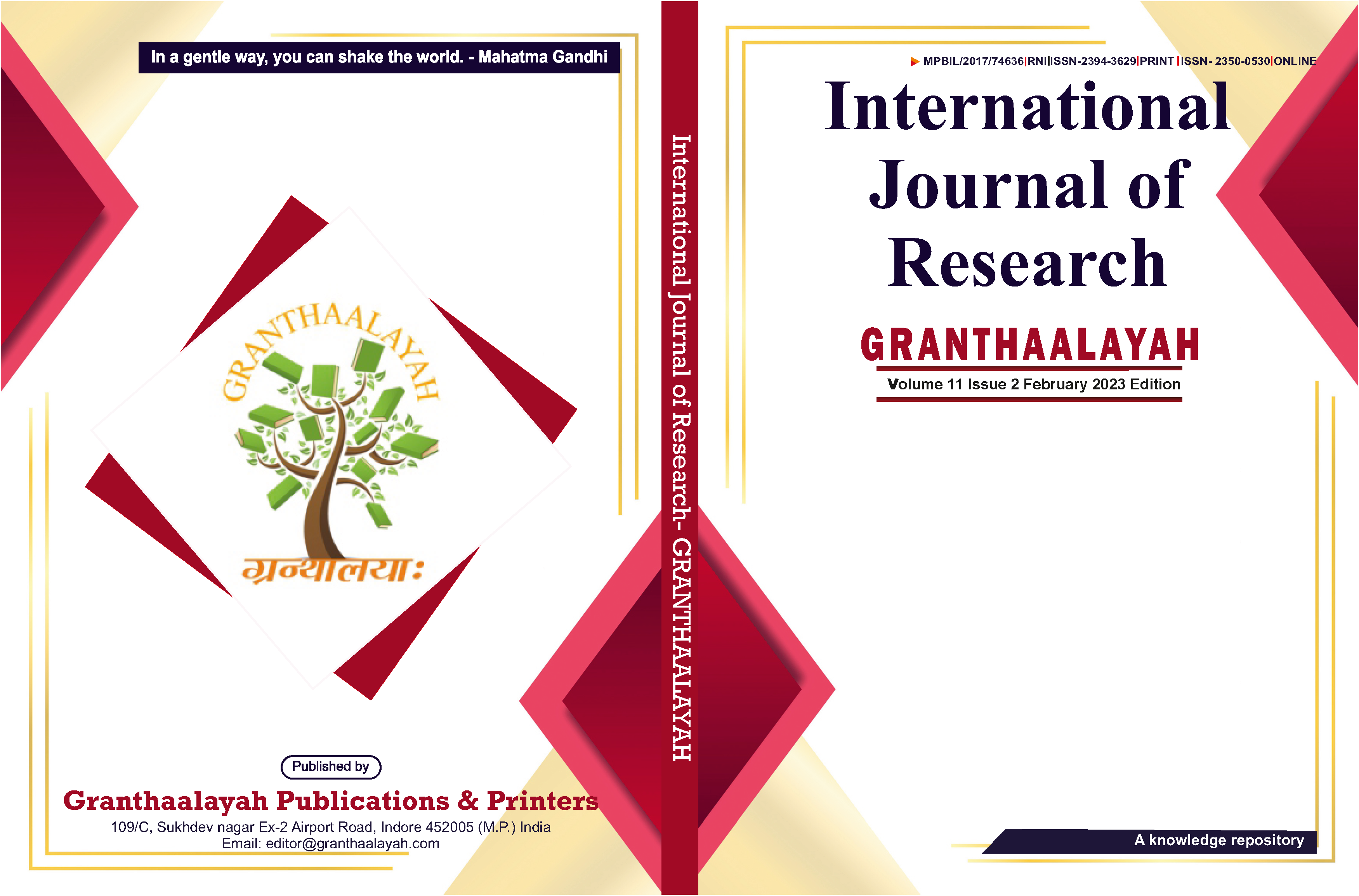CLINICAL SIGNIFICANCE OF THE TRADITIONAL JAPANESE MEDICINE, KEISHIKA-SHAKUYAKU-TO, IN ABDOMINAL SPASTIC PAIN
DOI:
https://doi.org/10.29121/granthaalayah.v11.i2.2023.5020Keywords:
Abdominal Spastic Pain, Antispasmodic Drug, Keishika-Shakuyaku-ToAbstract [English]
Primary goal: To assess the usefulness of Kampo for the outpatient treatment of abdominal spastic pain.
Research Design: Retrospective study
Methodology: A total of 85 patients with symptoms of abdominal spasmodic pain and diarrhea of unknown cause, including the patients with contraindications for anticholinergic drugs, were included in the study. The patient was administered oral Keishika-Shakuyaku-to (TJ-60: 7.5 g/day) to treat spastic pain and diarrhea. The degree of improvement in pain was evaluated using a numerical rating scale at the start of treatment and 3 months later and used as an indicator of continuation.
Main outcomes and Results: Therapeutic effects were seen in 77.6% (66/85) of the included patients with the level of pain decreasing by over 50% 3 months after the first treatment. Additionally, no side effects from oral administration or adverse events leading to drug discontinuation were observed.
Conclusions: Kampo, Keishika-Shakuyaku-to was found to reduce abdominal pain and diarrhea of unknown cause and could be used safely without causing significant side effects even in patients with contraindications for anticholinergic drugs.
Downloads
References
Bielefeldt, K., Davis, B., and Binion, D.G. (2009). Pain and Inflammatory Bowel Disease. Inflammatory Bowel Diseases, 15, 778–788. https://doi.org/10.1002/ibd.20848 DOI: https://doi.org/10.1002/ibd.20848
Binder, H.J. (2009). Mechanisms of Diarrhea in Inflammatory Bowel Diseases. Annals of The New York Academy of Sciences, 1165, 285–293. https://doi.org/10.1111/j.1749-6632.2009.04039.x DOI: https://doi.org/10.1111/j.1749-6632.2009.04039.x
Chey, W.D, Maneerattaporn, M., and Saad R. (2011). Pharmacologic and Complementary and Alternative Medicine Therapies For Irritable Bowel Syndrome. Gut and Liver, 5, 253–266. https://doi.org/10.5009/gnl.2011.5.3.253 DOI: https://doi.org/10.5009/gnl.2011.5.3.253
Gallego, D., Aulí, M., Aleu, J., et al. (2010). Effect of Otilonium Bromide on Contractile Patterns in the Human Sigmoid Colon. Neurogastroenterology and Motility, 22, 180–191. https://doi.org/10.1111/j.1365-2982.2010.01495.x DOI: https://doi.org/10.1111/j.1365-2982.2010.01495.x
Juckett, G., and Trivedi, R. (2011). Evaluation of Chronic Diarrhea. American Family Physician, 84, 1119–1126.
Lakhan, S.E., and Kirchgessner, A. (2010). Neuroinflammation in Inflammatory Bowel Disease. Journal of Neuroinflammation, 7, 37–49. https://doi.org/10.1186/1742-2094-7-37 DOI: https://doi.org/10.1186/1742-2094-7-37
Sanders, K.M., Hwang, S.J., and Ward, S.M. (2010). Neuroeffector Apparatus in Gastrointestinal Smooth Muscle Organs. Journal of Physiology, 588, 4621–4639. https://doi.org/10.1113/jphysiol.2010.196030 DOI: https://doi.org/10.1113/jphysiol.2010.196030
Spencer, N.J., Kyloh, M., Wattchow, D.A., et al. (2012). Characterization of Motor Patterns in Isolated Human Colon: Are There Differences in Patients With Slow-Transit Constipation? American Journal of Physiology-Gastrointestinal and Liver Physiology, 302, 34–43. https://doi.org/10.1152/ajpgi.00319.2011 DOI: https://doi.org/10.1152/ajpgi.00319.2011
Yoshihiko, K., and Hikaru, S. (2010). Properties of Rikkunshi-To (TJ-43)-Induced Relaxation of Rat Gastric Fundus Smooth Muscles. American Journal of Physiology-Gastrointestinal and Liver Physiology, 298, 755–763. https://doi.org/10.1152/ajpgi.00333.2009 DOI: https://doi.org/10.1152/ajpgi.00333.2009
Yoshihiko, K., and Noriyoshi, T. (2012). Comparative Studies of TJ-14 (Hange-Shashin-To) and TJ-60 (Keishika-Shakuyaku-To), Japanese Kampo Medicines, on Contractile Activities of Circular Smooth Muscles in the Rat Distal Colon. Journal of Pharmaceutical Sciences, 118, Suppl 1, 128.
Published
How to Cite
Issue
Section
License
Copyright (c) 2023 Noboru Saito, Maki Mitsuhasi

This work is licensed under a Creative Commons Attribution 4.0 International License.
With the licence CC-BY, authors retain the copyright, allowing anyone to download, reuse, re-print, modify, distribute, and/or copy their contribution. The work must be properly attributed to its author.
It is not necessary to ask for further permission from the author or journal board.
This journal provides immediate open access to its content on the principle that making research freely available to the public supports a greater global exchange of knowledge.

























